|
|
10 KYU - ORANGE BELT
|
|
Here you will find all the information that you will need to prepare you for your grading. This information includes your theory and your practical test. I hope this information helps in giving you a better understanding about Kyokushin Karate and also in giving you a better understanding of your requirements and at the same time it will helps you to study and prepare for your upcoming test.

MEANING OF THE BELTS
Below you will find a possible interpretation of the symbolism of the belt colors. I hope this will give a further understanding of the meaning of the Obi (belts) colors. Belt colors are not only to reflect growth in technique, but also in character.
The Orange
Belt (Stability)
At this level, the orange belt
represents the stability that we should bring to our training as well as in our life. On
this level you will begin developing a sense of balance and coordination between
the various parts of your body, with an emphasis to perform your stances
correctly. At this level the students will be given an emphasis to the correct
execution of the Kihon Geiko. Learning the correct way of executing the
techniques will give the students a good foundation that will give them a
cutting edge at later stages of his learning process of the Martial Arts.
Learning to execute the different techniques correctly will require from the
students a lot of work and many repetitions of those techniques. The student must
have a constant devotion in order to persevere and continue training with
receptivity and dedication.
![]()
WHAT YOU SHOULD KNOW FOR YOUR
KYOKUSHIN THEORY TEST
10 KYU - ORANGE BELT
Below are some vocabulary you should know in order to do your grading.
|
vocabulary 10 |
|||
|
1 |
2 |
||
|
Name |
Meaning |
Name |
Meaning |
| Ago Chusoku Do Fudo Dachi Gammen Gi Geri (Keri) Hidari Karate Karate Do Kata Kancho Kumite Kyoku Shin Kai Kyokushinkai Mae Mae Geri Mae Geri Chudan |
Chin or Jaw Ball of foot Path, Way Preparedness or Attention stance Face Karate uniform Kick Left Empty hand The way of Karate Form/Formal exercise director or President of the organization Sparring Ultimate Truth or Reality To meet/Join/Associate/Society/School Ultimate truth Front, Forward Front Kick Middle front kick |
Nogare Mawatte Migi Morote Seiken Ago Uchi Seiken Jodan Morote Tsuki Seiken Chudan Morote Tsuki Seiken Gedan Morote Tsuki Seiken Sensei Shihan Soto Soto Uke Tsuki Yoi Yoi Dachi (Heiko Dachi) Sanchin Dachi Kumite Dachi Uraken Uraken Ganmen Uchi Zenkutsu Dachi Uchi |
Calm, Controlled
breathing Turn Right Double, Reinforced Punch to the chin Double high punch Double middle punch Double lower punch Fist Teacher (3rd-4th) Expert (5th Dan above) Outside Outside Block Strike / Punch Ready Ready stance Pigeon toed stance Sparring stance Back Fist Back Fist to the face Forward or Front stance Inside / Strike |
YOU SHOULD HAVE A BASIC UNDERSTANDING OF: (Click on the links to get more information on the subject)
|
Karate : Empty Hand | |
|
Karate Do : The way of Karate | |
|
Kyokushinkai : Society or association for the Ultimate Truth | |
|
Kata: Form / Formal exercise | |
|
Kiai! : Explosive / Primal Hara Scream | |
|
Floor Cleaning :
There are many reasons why we clean the floor, below are some of those
reasons; | |
|
Sensei :
Sensei means Teacher and it is used as a general title of respect. Only black
belts with 3rd. Dan (Shodan) and 4th. Dan (Yondan) may use this title. Sometimes, in some schools
when there are no other higher belt than 2nd Dan in charge of the Dojo, the
the students call him Sensei, but it is not appropriate. | |
|
Shihan : Shihan means Expert.
Only black belts with
5th. Dan (Godan) and up
may use this title. | |
|
Kancho :
President or Chairman of the Kyokushin Organization (IKO - 3). The president
of the Kyokushin Organization we belong to, is Kancho Yoshikazu Matsushima
(9th Dan). | |
|
Senpai :
Senpai means Senior Student - Anyone who is a grade higher. If the same rank,
generally the older student of the two, or the one who began training first.
Usually, the actual title of "Senpai" is reserved for those of at least Nidan rank (2nd Dan), although in Japan it is used to address anyone in the
dojo who is your senior. Therefore, a Blue belt might be called Senpai by a
white belt and so on. | |
|
Why do you think our training hall is called “Dojo Entheos” | |
![]()
KYOKUSHIN KATAS
SHIHO TSUKI KATA
SHIHO TSUKI
ICHI, NI, SAN :
Kyokushin Kata has its origins in :
TAIKYOKU ICHI, NI, SAN (OMOTE):
![]()
Below you will find all what you need to know for your grading. It was designed to supply the students with information about their requirements for their grades. If you have any question regarding the requirements consult your teacher. The grading requirements in our school contain the following:
10th KYU - (ORANGE BELT):
NOTE: Please keep in mind that the students must pay the testing fees ($30) 2 weeks before they give the writing test. the testing fees cover the cost of the Belt and certificate.
Time in Classes= 5 months (one class per week/2 hrs. class)
Theory: (including all the above)
1.-
How to wear and fold a Karate Gi
2.-
Sosai Masutatsu Oyama
3.-
Titles of Black Belts
5.-
Be able to
write down the Dojo Kun
| 20 Hands Push Ups | |
| 10 Knuckle Push Ups | |
| 20 Deep Knee Bends With Front Kick | |
| 15 Sit Ups | |
| 2 Min. Jump Rope |
| Fudo Dachi (Prepared stance) | |
| Zenkutsu Dachi (Forward leaning stance) | |
|
Kumite
Dachi
(Fighting stance) | |
| Yoi Dachi (Ready stance) | |
| Sanchin Dachi (Glass stance) |
2) Tsuki Waza: (Punches - Strikes)
| Seiken Jodan-Oi Tsuki (Lunge high punch) | |
| Seiken Chudan-Oi Tsuki (Lunge middle punch) | |
| Seiken Gedan-Oi Tsuki (Lunge low punch) | |
| Seiken Jodan Gyaku Tsuki (Reverse high punch) | |
| Seiken Chudan Gyaku Tsuki (Reverse middle punch) | |
|
Seiken Gedan Gyaku Tsuki (Reverse low punch) | |
| Seiken Jodan Morote Tsuki (Double Lunge high punch) | |
| Seiken Chudan Morote Tsuki (Double Lunge middle punch) | |
| Seiken Gedan Morote Tsuki (Double Lunge low punch) | |
| Seiken Ago-Uchi (Fast punch to the chin/Strike to the jaw or chin) |
| Seiken Jodan Uke (High block) | |
| Seiken Gedan Barai (Downward block) | |
|
Seiken Chudan Uchi-Uke (Middle Inside block) | |
| Seiken Chudan Soto-Uke (Middle Outside block) |
| Hiza Ganmen Geri (Knee kick to the face) | |
|
Kin Geri (Snap kick to the groin) |
| Mae Geri Chudan Chusoku (Middle front kick, using the ball of the foot) |
|
Kihon Kata Ichi (Gedan Barai/Jodan Tsuki) | |
|
Kihon Kata Ni (Chudan Uke/Chudan Tsuki) | |
|
Kihon San
(Jodan Uke/Gedan Tsuki) | |
| Shiho Tsuki Ichi (Gedan Barai/Ni-Jodan Tsuki) | |
| Shiho Tsuki Ni (Chudan Uchi Uke/Ni-Chudan Tsuki) | |
| Shiho Tsuki San (Jodan Uchi Uke/Ni-Gedan Tsuki) |
Note: Ni-Jodan Tsuki = Means two high punches, first with the right hand (Migi Gyaku Tsuki), and then with the left hand (Hidari Gyaku Tsuki)
6) Idogeiko: (Basic Moving)
|
Seiken Jodan Oi Tsuki (Going forward in Zenkutsu Dachi) | |
|
Seiken Chudan Oi Tsuki (Going forward in Zenkutsu Dachi) | |
|
Seiken Gedan Oi Tsuki (Going forward in Zenkutsu Dachi) | |
|
Seiken Jodan Gyaku Tsuki (Going forward in Zenkutsu Dachi) | |
|
Seiken Chudan Gyaku Tsuki (Going forward in Zenkutsu Dachi) | |
|
Seiken Gedan Gyaku Tsuki (Going forward in Zenkutsu Dachi) | |
|
Seiken Jodan Uke (Going forward in Zenkutsu Dachi) | |
|
Seiken Chudan Uchi-Uke (Going forward in Zenkutsu Dachi) | |
|
Seiken Gedan Uke (Going forward in Zenkutsu Dachi) | |
|
Hiza Geri (Going forward in Zenkutsu Dachi) | |
|
Kin Geri (Going forward in Zenkutsu Dachi) | |
| Seiken Jodan Morote Tsuki (Going forward in Zenkutsu Dachi) | |
| Seiken Chudan Morote Tsuki (Going forward in Zenkutsu Dachi) | |
| Seiken Gedan Morote Tsuki (Going forward in Zenkutsu Dachi) | |
| Uraken Ganmen Uchi (Going forward in Zenkutsu Dachi) | |
| Seiken Ago-Uchi (Going forward in Zenkutsu Dachi) | |
| Mae Geri Chudan Chusoku (Going forward in Zenkutsu Dachi) |
6) Goshin Jitsu: (Self Defence)
| Sanbon Kumite (Three-step
sparring)
: Basic punches & Basic blocking (Jodan
Uchi Uke, Chudan Uke, Gedan Barai and Soto Uke) use basic techniques to counter attack. Use appropriate interval or distance (ma-ai)
and also proper use of the Kime (focus) Sanbon-Kumite #1 Attacker: Seiken Jodan Oi Tsuki-migi Defender: Seiken Oi Jodan uke-hidari & Seiken Jodan Gyaku Tsuki-migi Sanbon-Kumite #2 Attacker: Seiken Chudan Oi Tsuki-migi Defender: Seiken Oi Chudan Uchi Uke-hidari & Seiken Chudan Gyaku Tsuki-migi Sanbon-Kumite #3 Attacker: Seiken Gedan Oi Tsuki-migi Defender: Seiken Oi Gedan Barai-hidari & Seiken Gedan Gyaku Tsuki-migi Sanbon Kumite #4 Attacker: Seiken Chudan Oi Tsuki-migi Defender: Seiken Oi Chudan Soto uke-hidari & Seiken Chudan Gyaku Tsuki-migi | |
| Basic Release Techniques : Use Jodan Uke, Gedan Barai, Chudan Uchi Uke, and Soto Uke to release from wrist grabs. |
![]()
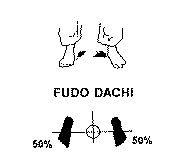 |
 |
 |
 |
| FUDO DACHI | FUDO DACHI | SANCHIN DACHI | SANCHIN DACHI |
STRIKES WITH THE FRONT OF THE FIST
(SEIKEN)
|
|
|
|
Seiken Jodan Morote Tsuki |
Seiken Ago Uchi |
STRIKES WITH THE BACK OF THE FISTS
(URAKEN)
|
|
|
Uraken Ganmen Uchi |
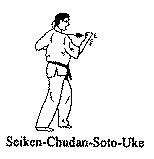 |
| Seiken Chudan Soto Uke |
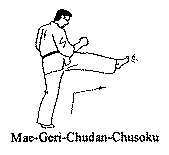 |
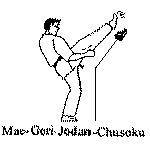 |
| Mae Geri Chudan Chusoku | Mae Geri Jodan Chusoku |
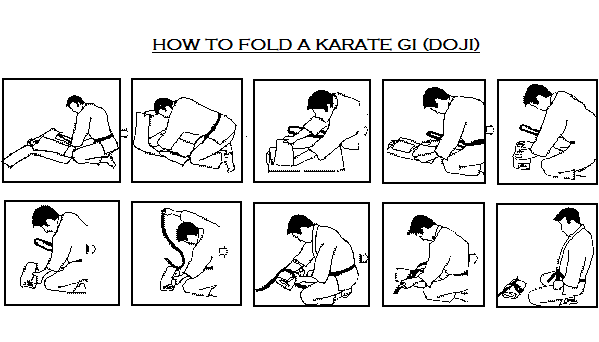
![]()
For more information contact your teacher, sensei Angel Carrasco at: angel@kyokushincanada.com
GO TO THE MAIN PAGE OF WINNIPEG KYOKUSHIN KARATE - DOJO ENTHEOS